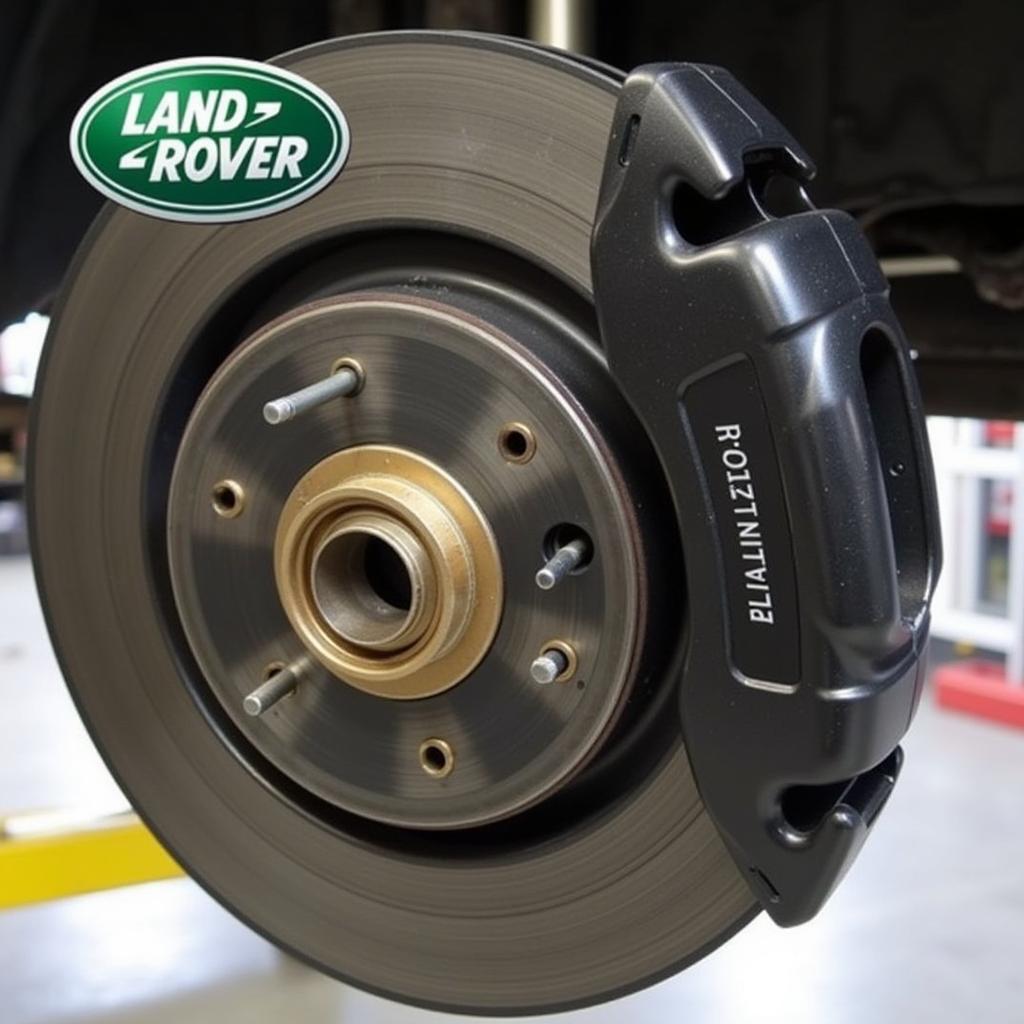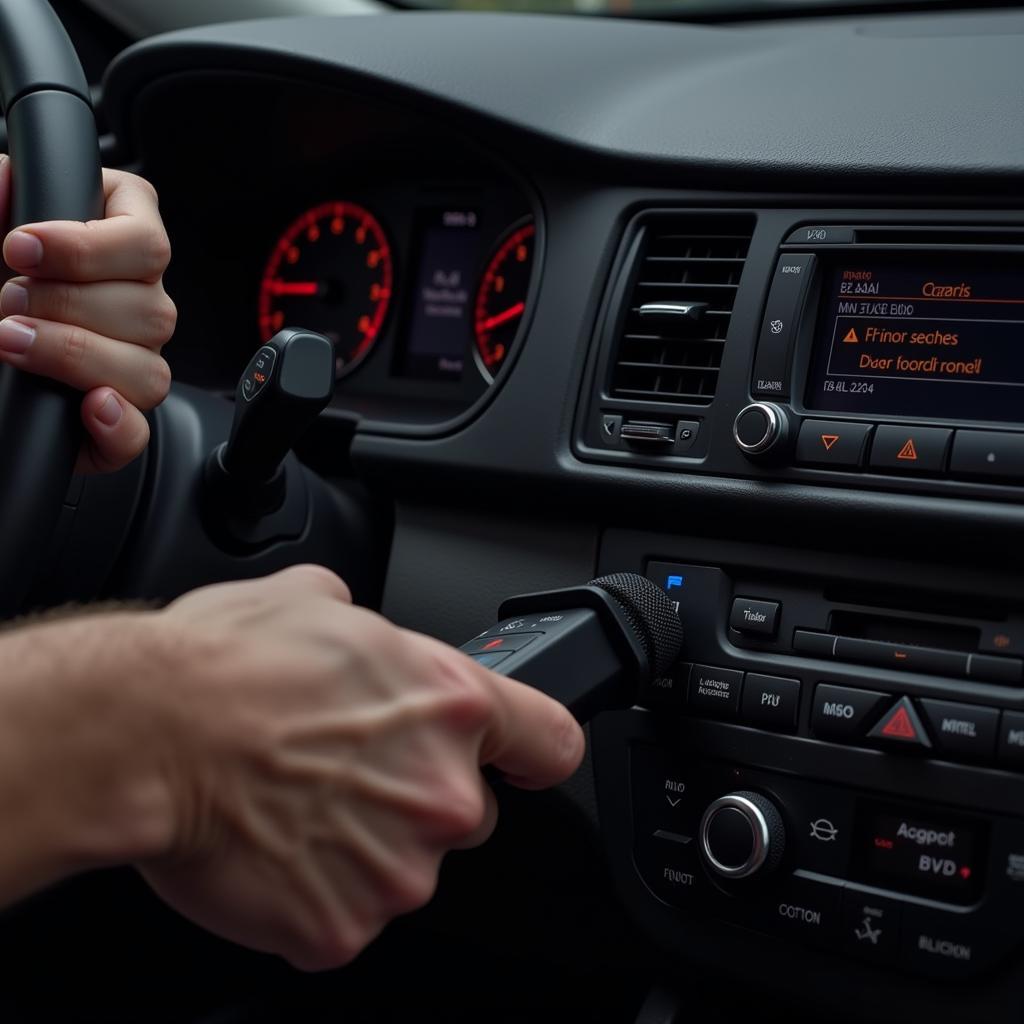The brake pad warning light on your BMW 320d is a crucial safety feature, illuminating when the brake pads wear down and require replacement. While this is an essential reminder, it can be frustrating if the light stays on after a pad change. This comprehensive guide will walk you through the steps to reset the brake pad warning light on your BMW 320d, covering various scenarios and troubleshooting tips.
Understanding the BMW 320d Brake Pad Warning Light
Before diving into the reset process, it’s vital to understand how the system works. The BMW 320d utilizes a wear sensor, typically a small wire embedded within the brake pad material. As the brake pads wear down, the sensor eventually makes contact with the brake rotor, completing a circuit and triggering the warning light on your dashboard.
Common Reasons for a BMW 320d Brake Warning Light Reset
You’ll typically need to reset the brake pad warning light after:
- Replacing worn brake pads: This is the most common reason. After installing new pads, the system needs to be reset to recognize the change and turn off the warning light.
- Brake pad sensor replacement: If the sensor itself is faulty or damaged, it can trigger the warning light prematurely. Replacing the sensor requires a reset.
- Electrical glitch: Like any electrical system, the brake warning light system can experience temporary glitches. In such cases, a reset might resolve the issue.
How to Reset the Brake Warning Light on a BMW 320d
Resetting the brake pad warning light on a BMW 320d can sometimes be accomplished through a simple manual reset procedure. However, newer models or specific situations might require using a diagnostic tool. Here’s a breakdown of both methods:
Method 1: Manual Reset
This method works on some older BMW 320d models:
- Turn the ignition to position one (accessory mode).
- Press and hold the brake pedal for about 30 seconds.
- While holding the brake pedal, turn the ignition off.
- Release the brake pedal.
If this method is successful, the brake pad warning light should turn off when you start the car.
Method 2: Using a Diagnostic Tool
For newer BMW 320d models or if the manual reset fails, you’ll need a diagnostic tool:
- Connect a compatible diagnostic tool to your car’s OBD-II port. The OBD-II port is usually located under the dashboard on the driver’s side.
- Turn the ignition to position two (on).
- Access the brake system menu on your diagnostic tool.
- Select the “Brake Pad Reset” or “Service Reset” function.
- Follow the on-screen prompts to complete the reset process.
Using a diagnostic tool ensures a proper reset, especially in modern BMWs with complex electronic systems.
What if the Brake Pad Warning Light Stays On?
If the warning light remains on after attempting both reset methods, it indicates a potential problem:
- Faulty brake pad sensor: The sensor itself might be defective and need replacement.
- Wiring issue: There could be damage to the sensor wiring, causing a false reading.
- Issue with the brake system: A more serious problem, such as a brake fluid leak or worn brake components, could be triggering the light.
If you’re unsure about any aspect of the brake system or the reset process, it’s always recommended to consult a qualified mechanic for a thorough inspection and professional assistance.
FAQs About BMW 320d Brake Pad Warning Light Reset
Can I drive with the brake pad warning light on?
It is not advisable to drive with the brake pad warning light on. The light indicates that your brake pads have worn down significantly and require immediate attention.
How often do brake pads need to be replaced on a BMW 320d?
Brake pad lifespan varies depending on driving style and conditions. However, it’s generally recommended to have them inspected every 10,000-12,000 miles and replaced as needed.
Can I reset the brake pad warning light myself?
You can attempt a manual reset, but using a diagnostic tool is generally recommended, especially for newer models.
What should I do if the warning light comes on again after a reset?
If the light reappears shortly after a reset, it indicates a potential issue with the brake system. Consult a qualified mechanic immediately for diagnosis and repair.
Is it necessary to replace all four brake pads at the same time?
While replacing all four pads at once is ideal, it’s not always mandatory. However, always replace pads on the same axle (front or rear) simultaneously to maintain balanced braking.
This detailed guide provides you with the knowledge and steps needed to reset the brake pad warning light on your BMW 320d. However, always prioritize safety and consult a qualified mechanic if you encounter any uncertainties or persistent warning lights. For more information on brake system warning lights and how to address them, refer to our comprehensive guide on brake system warning lights. If you’re specifically looking for instructions on resetting the brake warning light on a BMW 320d, our dedicated article on bmw 320d brake warning light reset will provide you with detailed steps. For a step-by-step guide on how to reset the brake warning light on a BMW 320d, check out our guide on how to reset brake warning light on bmw 320d. Remember, a well-maintained braking system is crucial for your safety and the optimal performance of your BMW 320d.


